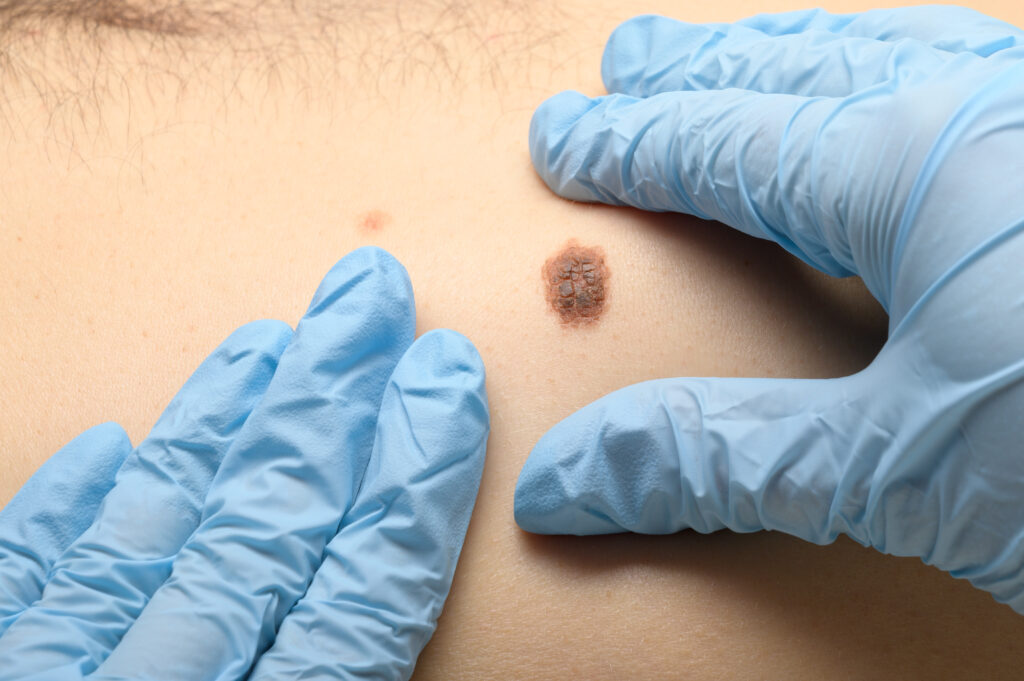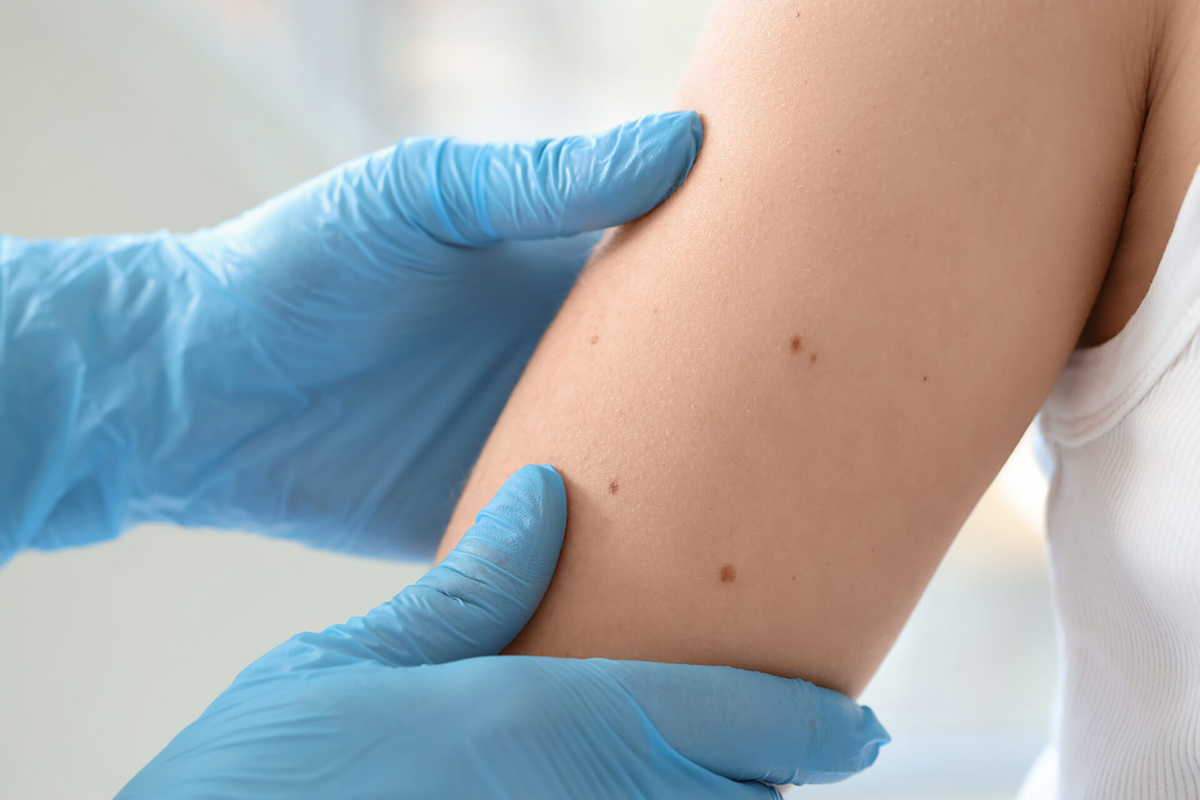
An article by Dr. Lena Hampel, specialist for skin and sexually transmitted diseases, specialized in skin cancer and dermatosurgery.
White skin cancer – in the form of basal cell carcinoma and squamous cell carcinoma – is the most common tumor in humans and, unlike other cancers, is much more complex and varied in its treatment than is often assumed.
Depending on the type, location, size and extent of the cancer, different methods are used for optimal treatment. Non-surgical procedures such as cryotherapy or laser are used for isolated areas of precancerous skin lesions. Photodynamic therapy (PDT) and drug-based cream therapies, which lead to the destruction of tumor cells, are particularly suitable for large areas of actinic keratoses. For nodular and aggressive forms of white skin cancer, surgical treatment by a dermatosurgeon is the best choice. The gold standard for operations on the face and cosmetically relevant regions is Mohs surgery, which achieves the smallest surgical defect/scar and the highest healing rate according to the US procedure. At Mohs Surgery, the tumor is operated on 100% incision-controlled in one session and the defect is only closed once the tumor has been completely removed. For successful treatment with the full range of tumour therapies, it is therefore recommended to consult a dermatologist specializing in skin cancer at the Wiener Privatklinik.
Risk Factors for White Skin Cancer: Priv. Doz. Dr. Christiane Thallinger, Specialist in Skin and Sexually Transmitted Diseases
Many factors are relevant for the development of white skin cancer – above all excessive exposure to the sun: frequent sunburns and long exposure to the midday sun are considered risk factors for the development of white skin cancer. The risk of developing white skin cancer is particularly high for fair-skinned, red-haired people. Certain medications – immunosuppressive drugs, diuretics, etc. – can also promote the development of white skin cancer. There are also rare genetic diseases that are associated with an increased risk of white skin cancer, such as basal cell carcinoma or squamous cell carcinoma. The best prevention is to protect yourself against direct sunlight: This can be achieved with adequate sun protection products with a sufficiently high sun protection factor, by wearing appropriate sun protective clothing or simply by avoiding the sun. The earlier malignant skin diseases are detected, the better the chances of recovery, which is why regular checks of the entire skin by a dermatologist are strongly recommended.
Chances of Curing White Skin Cancer: Dr. Klaus Guggenberger, Skin & Sexually Transmitted Diseases and Allergology
Skin cancer can develop almost anywhere on the body: Most commonly in the form of basal cell carcinomas, which occur mainly where the sun regularly hits the skin. Much rarer in the form of squamous cell carcinomas, which can also be found in areas with little exposure to the sun. For all forms of white skin cancer – including its precursor, actinic keratoses – the chances of recovery are excellent. Provided they are detected early and treated appropriately. While actinic keratoses in the early stages can be treated and eliminated with creams, gels or liquid nitrogen, it is recommended that more advanced forms are removed surgically with a close safety margin. At the Wiener Privatklinik, the entire procedure for the treatment of white skin cancer can be carried out under one roof – from diagnosis and removal to histological findings and follow-up checks.
Doctors related to the topic

Dr. Lena Hampel
Skin & Sexually transmitted diseases, Dermatosurgery, Laser surgery, Mohs Surgery
View detail
Priv.-Doz. Dr. Christiane Thallinger
Skin & Sexually transmitted diseases, WPK Central European Academy Cancer Center
View detail
Dr. Klaus Guggenberger
Skin & Sexually transmitted diseases, Allergology, WPK Central European Academy Cancer Center
View detail

